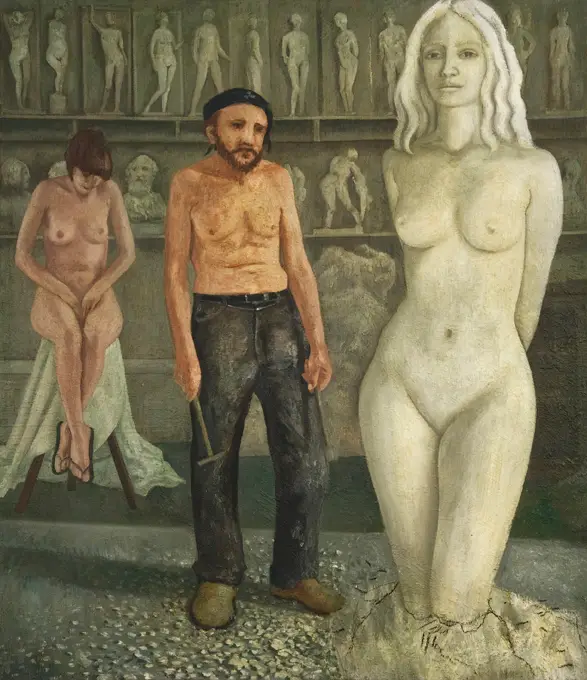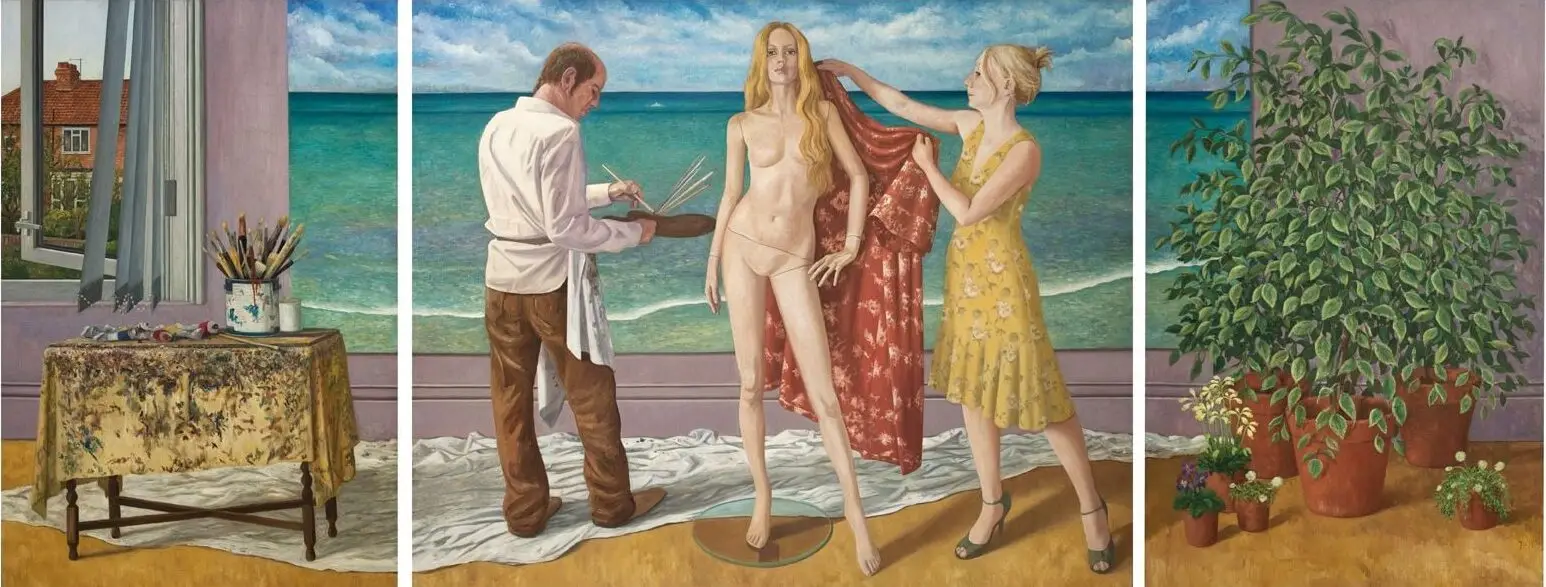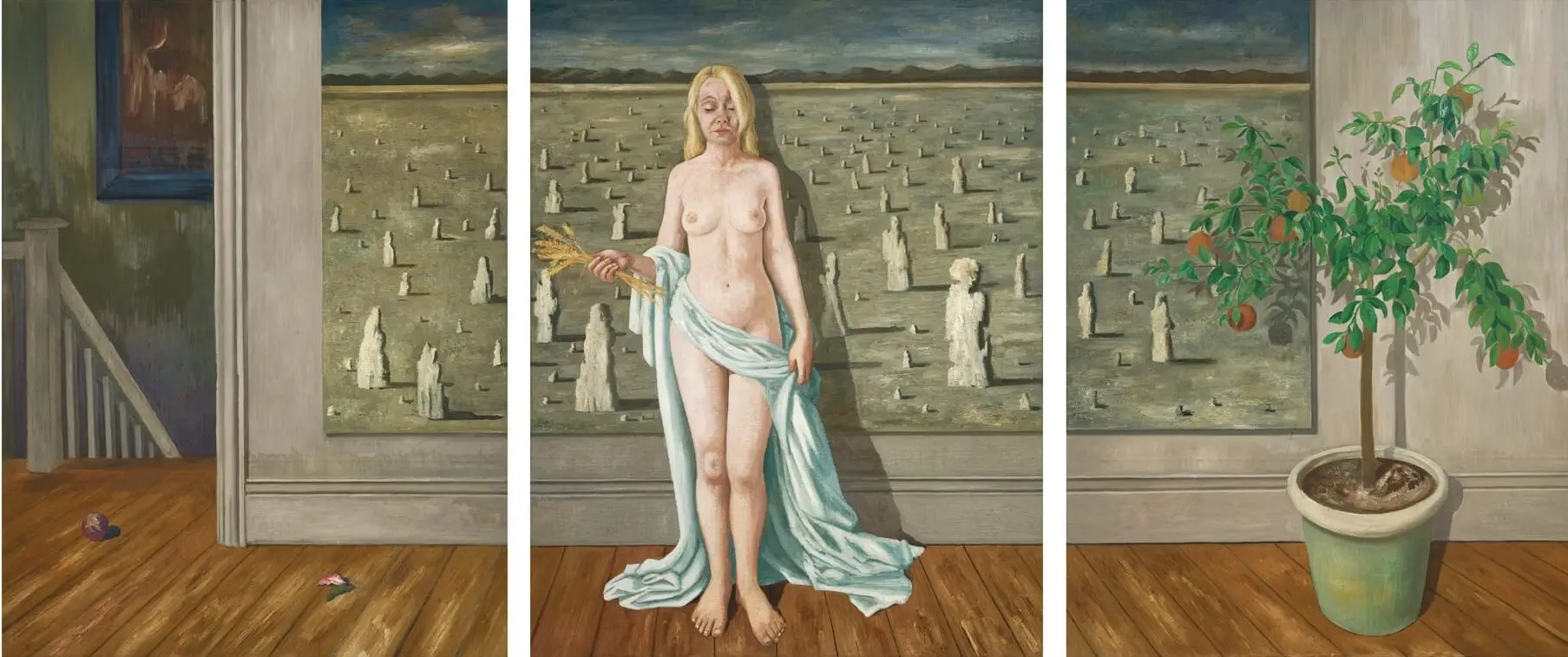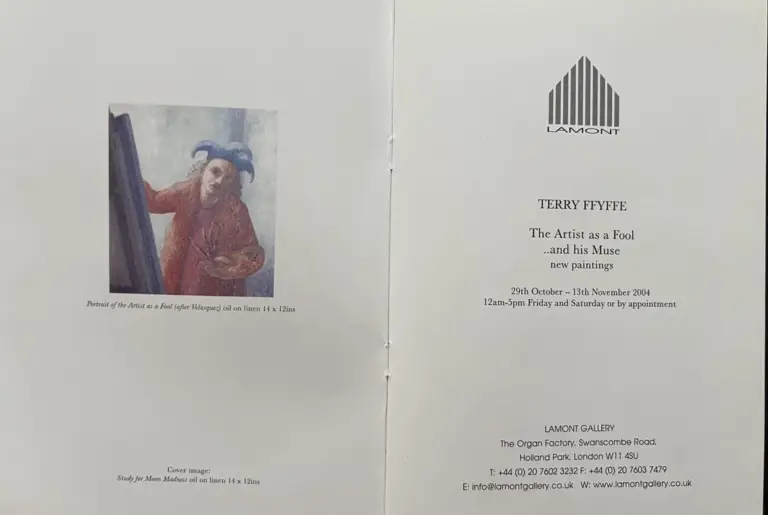
Allegorical Art
Spanning from the early 1990’s to the late 2000’s, Ffyffe’s allegorical paintings explore themes of identity, faith, and mythology. This section includes 54 paintings from two notable series, Artist as a Fool and Alchemist and Retelling of Ancient Stories.
The Artist as Fool and Alchemist
This series of paintings was completed during 1995-1996 and helped establish Ffyffe’s reputation as ‘one to watch’ in the United Kingdom art establishment. His Study for the Portrait of the Artist as a Fool won the major prize in the Sunday Mail’s Discerning Eye award (a competition that attracted 10,000 entries).
Many of these works were the subject of a solo exhibition The Artist as a Fool…and his Muse, Lamont Gallery, London, 2004.
Prominent art critic David Lee listed this exhibition as one of the best exhibitions of 1996.
Renowned art critic Edward Lucie-Smith was also an staunch admirer of Ffyffe’s offerings and wrote the following in the preface of the 2004 exhibition booklet: “They are an increasingly confident exploration of the artist’s inner self – full of pain sometimes, often coloured with cynicism and irony, but also full of joy.”
In many of these paintings, Ffyffe portrayed himself as either the fool or the alchemist.
In the Southern Cross newspaper published November 29, 1995, Ffyffe is quoted as saying “Society perceives artists as foolish, as art has no practical purpose. But in order to create, the artist needs the consciousness of a fool or to be innocent.”
The backdrop to the theme may have roots in Ffyffe’s relationship with his father who remained cynical of his son’s artistic vocation, and Fyffe’s own realisation that for all intents and purposes, very few people recognised and placed any value on the works of a modern figurative artist.
As Ffyffe said, “The world had moved on from the tradition of oil on canvas painting; film, music and computer-generated images coupled with the post-modernist affirmation that ‘Art was anything that we might decide it to be’ had become the modern mantra. You would be a fool indeed!”
But what was the role of the fool in society? The Court Jester was the joker and prankster of the medieval court. His job was to entertain and provide comic relief to the court. Yet he could speak truth to power where others must hold their tongue.
The artist is also an alchemist. In medieval society, alchemists were early practitioners of metallurgy and chemistry and had, as their holy grail, the quest to turn base metals into gold. The artist’s aspiration is to transform the base ingredients of oil and the ochre into spiritual gold … Beauty in other words.
Retelling of Ancient Stories
In the second half of the 2000’s, Ffyffe began exploring the ancient Greek myths and biblical stories, retelling the stories in a modern context. These pieces remain largely self-reflective, often featuring the artist, his brushes and his paintings as prominent and symbolic. His works breathe new life into the ancient myths of Demeter and Pygmalion. We see the artist taking on the challenge of bringing love and beauty to the world in his Homage to Venus, the Goddess dwarfing, yet kindly encouraging the artist to paint her.
Plastic Venus, a triptych derivative of Sandro Botticelli’s Birth of Venus (1486) is one of Ffyffe’s most accomplished works in this genre. Terry’s representation of Venus is as a mannequin who confronts us, bold and shameless. What has become of the love and beauty that Botticelli painted?
For details including dimensions and the indicative price of each piece, please click the relevant image.


Allegorical Art For Sale


Introduction by Edward Lucie-Smith to the Artist as a Fool…and his Muse Exhibition. Lamont Gallery 2004

Terry Ffyffe wins the Discerning Eye New Discovery Art Prize. 1995
